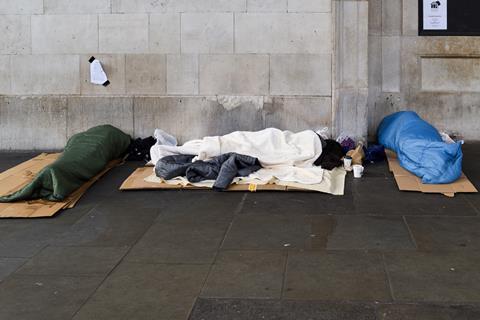The homelessness sector has welcomed the additional £233m funding for homelessness in the budget but says long-term funding is needed.
The number of people sleeping on the streets in London reached a total of 4,780 between July and September, marking an 18% increase compared to the same period last year.

The figure is also 13% higher than the previous quarter and the highest quarterly figure on record.
According to figures from the Combined Homelessness and Information Network (CHAIN), 2,343 people were rough sleeping for the first time in the quarter leading to September 2024, marking a 12% rise compared to last year.
>> See also: Government allocates extra £230m to tackling homelessness and rough sleeping in Autumn Budget
>> See also: London councils’ forecast £250m overspend on homelessness, London Councils warns
There were 681 people deemed to be living on the streets long-term, 42% higher than at the same point in 2023 and 9% higher than the previous quarter in April and June.
Just over half of those recorded as rough sleeping had a mental health support need.
Chief executive of St Mungo’s, Emma Haddad, said: “It is heartbreaking to see the latest reality of the homelessness crisis brought home by these figures – almost 5,000 people sleeping on the streets of London in just three months is a number that should incense us all.
“With a massive increase in the number of people sleeping rough for the first time, alongside a massive increase in the number of people actually living on the streets, we need to treat this as an emergency.”
Haddad added: “Our outreach teams are on the frontline of this crisis right now. They supported 9,000 people rough sleeping in the UK last year. They are also responding to increased levels of need, with mental health needs particularly pronounced.”
She said that the additional £233m allocated to tackling rough sleeping and homelessness in yesterday’s budget is “welcome news and will help us respond to the thousands of people who are sleeping rough.”
However, she noted that “funding must be sustainable, long term and part of a much broader solution that prevents people becoming homeless in the first place. Only then will we – national, local and civil society partners – be able to say confidently that everyone has somewhere safe and warm to live.”










No comments yet